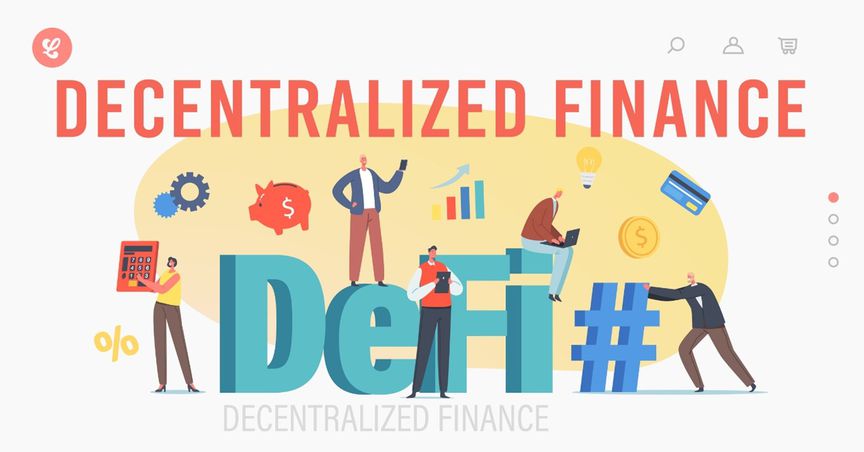Highlights
- Decentralised Finance (DeFi) is an umbrella term used to describe peer-to-peer financial services offered on public blockchains
- DeFi platforms ensure transparency and security, but they are also prone to frauds
- Risk-averse users will always stay away from these platforms
Decentralised Finance (DeFi) can be seen as a disruption in the traditional banking system. It is an emerging sector that uses blockchain technology and digital assets to manage financial services. DeFi is an umbrella term used to describe peer-to-peer financial services offered on public blockchains. DeFi offers a new understanding of how financial transactions can be done, managed or settled between the parties without the involvement of intermediaries such as brokerages and exchanges.
DeFi was introduced back in 2019 and promises to revolutionise the banking system. The platform has expanded greatly and got acceptance by the wider public. Now the question that arises here is, will DeFi mark the end of traditional banking? To answer this question, we first need to understand how it challenges the traditional banking system?
How DeFi challenge the traditional banking system?
DeFi is an independent and decentralised financial system outside the control of any regulatory authority or governance body. However, the traditional financial system is centralised, which means someone controls the banking transactions, stock exchanges, or insurance firms. This might result in frauds, scams, data privacy-related issues, corruption or mismanagement.
DeFi is the answer to all these issues. Unlike the traditional banking system, the transactions are managed and settled by the end-users only. In brief, the users can control their finances and experiment with them around the clock. No intermediary is involved in approving the request or executing the transaction. Everything happens on the blockchain automatically.
In the blockchain, the data can be changed once entered, and it is transparent as well. Thus, DeFi also solves the issue of data privacy, data manipulation or mismanagement.
In terms of the return also, the DeFi is a better option over banks. In banks, the users deposit their savings in the savings account and these funds are used for lending. For example, a bank pays an annual interest of 0.6% on a savings account and charges 3% on loans. The difference of 2.4% is the profit earned by banks. In DeFi, the lender can make this profit of 2.4%, or the borrower can take a loan at a lesser interest rate. However, the users are required to pay some fees to DeFi platforms.
What would happen if DeFi completely replaces the traditional banking system?

Image source: © Kwanchanokpiem | Megapixl.com
DeFi sector is gaining acceptance among users, and banks are rethinking their models to get the first mover’s advantage. Not only the financial sector but regulatory bodies are also taking interest in blockchain technology and DeFi. However, it seems a little difficult to integrate DeFi in all aspects of banking. There are numerous challenges that users would encounter on DeFi.
To begin with, DeFi does not have any rules or regulations, and users won’t be able to contact anyone in case of a foul transaction. So, the risk-averse investors would like to stick to the traditional banking system where there is some level of guarantee and awareness of the process as well. In addition to this, people do not have much knowledge about the same. They might like to stay away from experimentation.
A user can operate on DeFi or a blockchain system through a private key. A private key is a unique password that gives access to the digital wallet. If a user loses this key or shares it with someone, then he would lose access to his holdings and funds. Noteworthy here is that there is no way you can get your key back.
Do read: What are Madonna NFTs and are they failing to invite high bids?
Conclusion
While it is true that acceptance of DeFi platforms is growing with the revolution in technology and investors’ search for better returns on their money, it still has some grey areas in terms of security. Its decentralised nature itself is the biggest risk as governments and banking regulators cannot regulate the transactions happening on these platforms. In comparison, the traditional banking system is still reliable in the sense that a regulator is overseeing the transactions happening here. So DeFi and the traditional banking are likely to coexist for the time being given their own set of merits and demerits.
Suggested reading: Crypto Catch: Bitcoin drops to US$29k level; crypto ETFs launch in Australia



